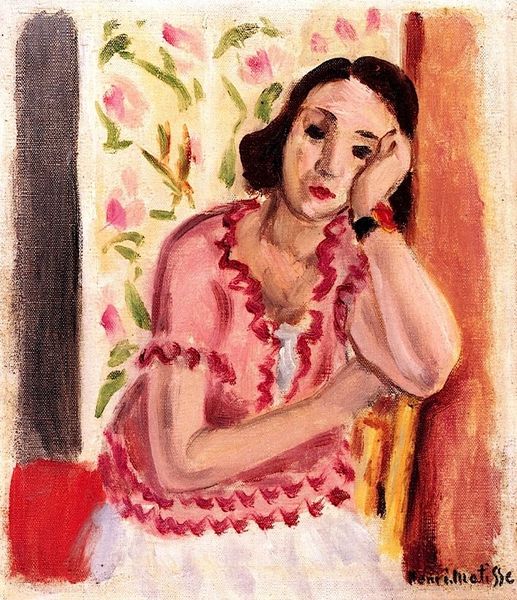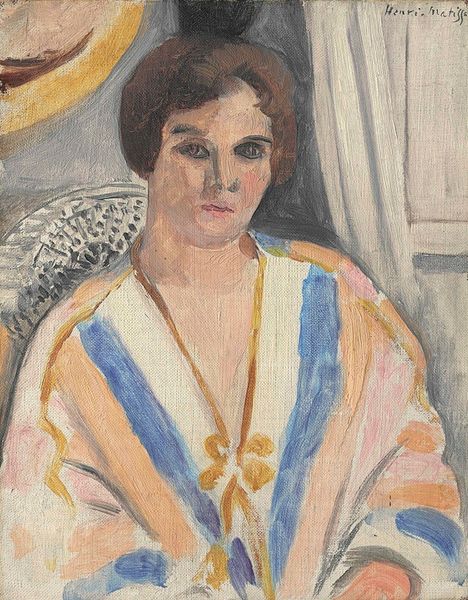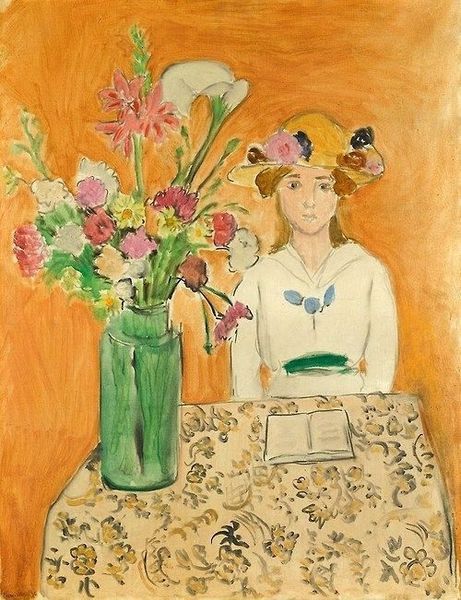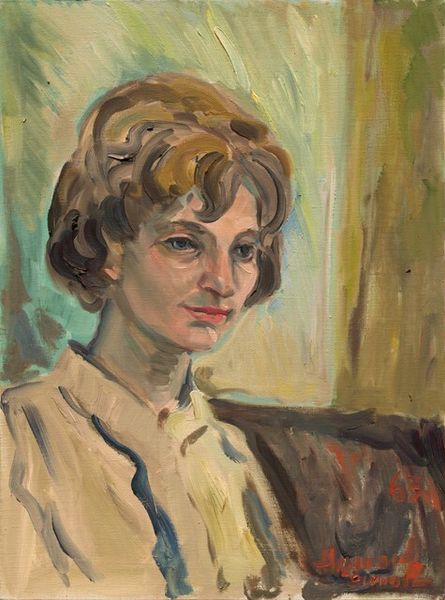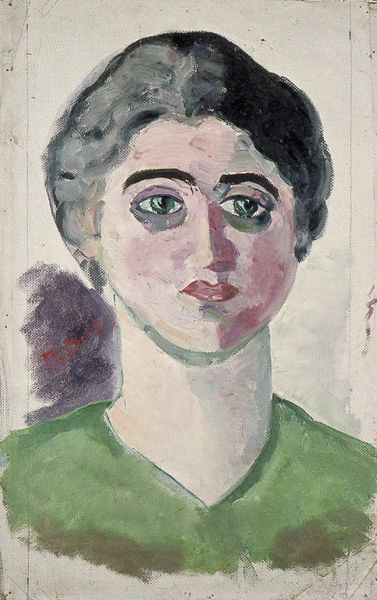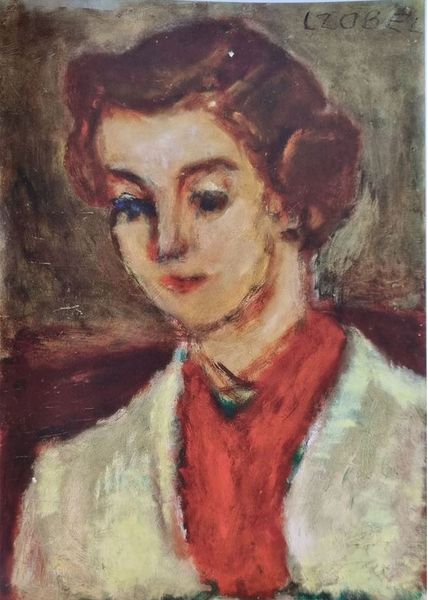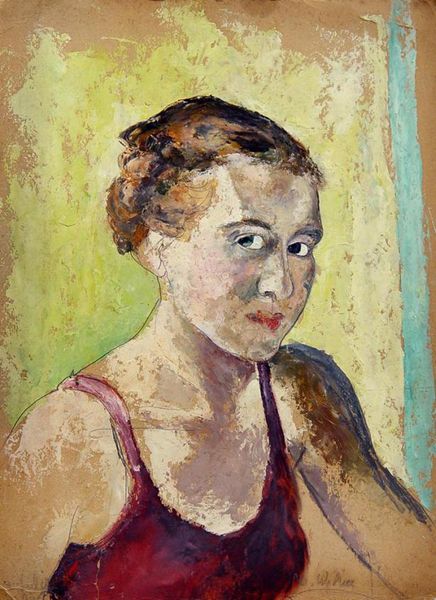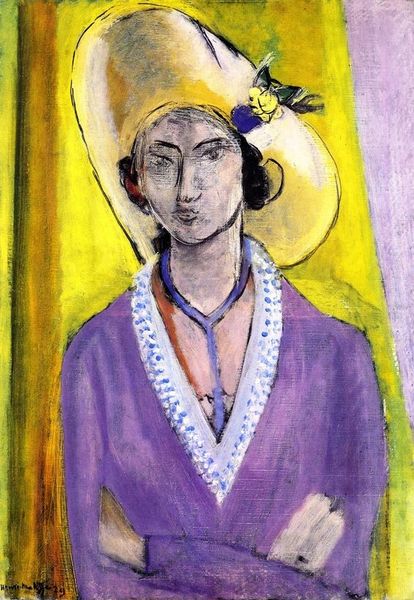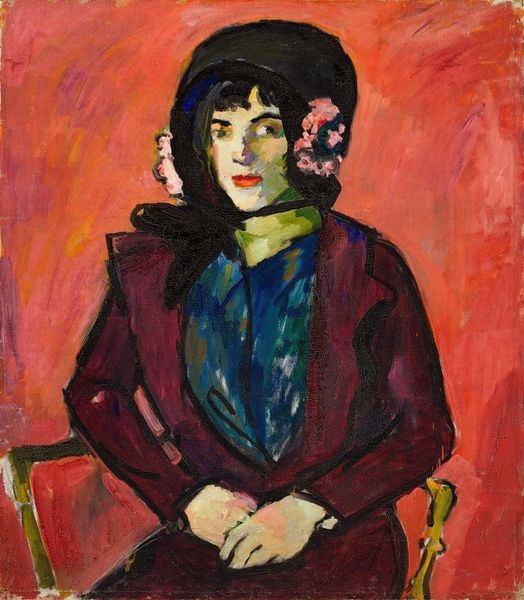
Copyright: Public domain US
Editor: We’re looking at “The Bulgarian Blouse,” painted by Henri Matisse around 1920 using oil paint. It’s quite striking, with the red background contrasting sharply with the floral blouse. What elements of this composition particularly grab your attention? Curator: The tension arising from the interplay of pattern and form dominates my viewing experience. The floral motif, aggressively flattened and simplified, battles with the implied three-dimensionality of the figure. Note also the spatial ambiguity created by the limited modelling and flattened planes; it refuses traditional perspectival depth. Editor: So, it's more about the abstract qualities than a realistic depiction? Curator: Precisely. While representational elements persist, they’re subsumed within a broader concern for surface and arrangement. The expressiveness emerges from the juxtaposition of the vibrant, unmodulated colour fields. Ask yourself: how does the application of the oil paint, with its visible brushstrokes, contribute to the overall aesthetic effect? Editor: It makes it feel very immediate, almost raw. The color isn't blended smoothly; you can really see the artist's hand. Curator: Exactly! That visceral quality, prioritizing direct expression through visible materiality, marks a clear departure from academic traditions. Its essence resides not in the illusion, but in the reality of its constructed artifice. Editor: I hadn’t considered the materiality in that way. It is so interesting how you interpret color and surface. Curator: I, too, will consider materiality in my own work.
Comments
No comments
Be the first to comment and join the conversation on the ultimate creative platform.
